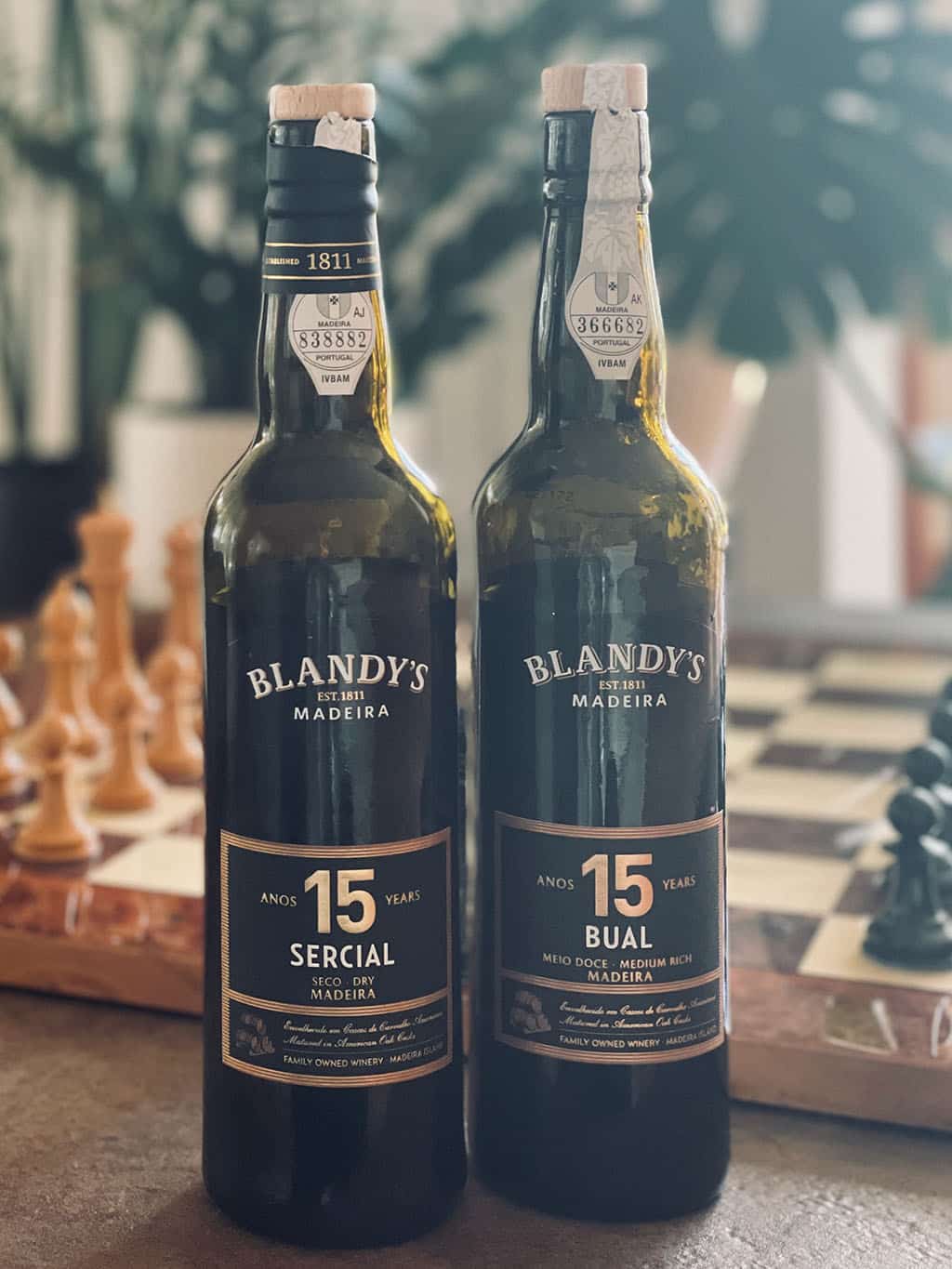Choosing a Madeira wine by reading the label can be challenging, but here are a few pointers that can help navigate that.
Firstly, there are two distinct categories of Madeira wine – blends and dated wines. The art of producing a quality blended wine is the hardest job for the winemaker. The word “blend” in the context of Madeira wine does not refer to the classically understood blend of grapes, but rather it is the blend of vintages of the same grape. In addition to that blend is a specific style of wine that is expected from a certain number of years of ageing.
Before bottling, a producer submits a sample of the blend to an independent tasting committee. The committee then asks: “Is this what we expect of a 10-year blend?” or “a 20-year blend?” The answer is a straightforward “yes” or “no“, with the former leading to the bottling of the product and the latter returning the blend back to the producer for another attempt at blending.
The authorised blends are three, five, 10, 20, 30, 40 years old, and more than 50-year-old wines, where the youngest constituent of the blend defines the year that goes on the label.

Madeira wine shop at Blandy’s winemakers
The dated wines come in two varieties – ‘Colheita’ and ‘Frasqueira’. These are the exceptional wines. Their potential is identified at the harvest time based on the quality of the fruit collected.
Both made with the single grape using the ‘canteiro’ method, however ‘colheita’ represents the wine that spent more than five years and less than 20 years in the oak barrels, and ‘frasqueira’ (or Vintage Madeira Wine) stands for at least 20 years in the oak barrels before bottling.
The production of these wines is extremely limited, around 700-800 bottles per producer per year, making it a unique drinking experience suitable for a special occasion, of which history knows a few!
For example, it was the Madeira wine with which the founding fathers of America toasted to its independence in 1776 following the ‘Boston Tea Party’. Thomas Jefferson, Benjamin Franklin, John Adams and John Hancock were known to be very fond of it.
The Madeira Wine was also offered to Napoleon Bonaparte in 1815, when he was passing by Funchal on his journey to Saint Helena. It became famous among wine lovers since the emperor did not drink it and the wine returned to the island. This barrel earned the label of Battle of Waterloo in 1840 and was later appreciated by Sir Winston Churchill.
William Shakespeare referred to the Madeira Wine in his play “Henry IV”, as one of the immortal characters, Falstaff, was accused of exchanging his soul for a chicken leg and a glass of Madeira. Furthermore, in the late 15th century, one of the victims of the War of the Roses, the Duke of Clarence, was sentenced to death and was given a right to choose the style of execution. He chose to be drowned in a barrel of Malmsey wine of Madeira.
The Duke was not forgotten by the Madeirense people for his dedication to the wine. His name, along with the Duke of Cumberland and the Duke of Sussex, are given to the types of affordable Madeira wines that denote a light, three-year-old style blend made from Tinta Negra.
The most observant readers would also know that there are a few other words that can be found on the labels of Madeira wine. ‘Selecionado’ refers to the wine that is “showing an exceptional quality for its age”. ‘Reserva’ is a five-year-old style blend, and ‘Reserva Especial’ is a 10-year-old style blend, most likely made of one of the noble varieties, and heated using the ‘canteiro’ method. ‘Extra Reserva’ is a 15-year-old style blend, very likely to be a noble grape variety and heated by the ‘canteiro’ method.
The culinary versatility
Undoubtedly, the highest quality of Madeira wine should be enjoyed on its own. The recommended serving temperature of the older wines should be between 15ºC and 16ºC, and the younger wines can be enjoyed at temperatures between 13ºC and 14ºC.
Blends and younger wines can also be used in cooking. Try serving Chicken Cacciatore with a mushroom and Madeira wine sauce or elevating the Beef Stroganoff with a dash of Madeira. Locals use it for marinating meats and undoubtedly to make desserts.
Chocolate always welcomes Madeira, as do bananas, which are also plentiful and delicious in Madeira and which are served flambéed. Madeira wine is also perfect for poaching fruits and making delicious infusions or reductions.
It is a wine of unique and complex character. If you have not made its acquaintance yet, I recommend doing so at your earliest convenience. I am positive you will become friends with this magnificent drink.
Read Part 1 – Madeira Wine – The making of the legend – Part 1
By Dr. Irina Mikhailava
|| features@algarveresident.com
Dr. Irina Mikhailava, a chef and a good food champion, happily residing in the Algarve and eating all over the world with an appetite for learning, sharing and writing. Instagram: incompanyoffood




















